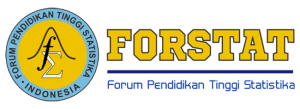Aplikasi Small Area Estimation (SAE) Metode Pseudo EBLUP pada Official Statistics di Indonesia
DOI:
https://doi.org/10.34123/jurnalasks.v10i2.89Abstract
Small Area Estimation (SAE) is a modeling-based estimation method. In practice, SAE that is often used is a type A model, because the availability of auxiliary variables is only available at area level. One of small area estimation method is Empirical Best Linear Unbiased Prediction (EBLUP). When the EBLUP estimation does not include an appropriate and specific sampling weight, it is assumed that the sample is selected by Simple Random Sampling (SRS) which assumes that each unit has the same probability to be selected as a sample. However, the design of Proportional Proportion to Size Sampling (PPS) sampling tends to be better and more efficient to use than SRS because each unit has different probability to be selected as a sample, depending on the size used. One of important indicator / official statistics is household expenditure as a proxy indicator of household poverty measurement. This study included a sampling weight in small area estimate of household expenditure, a case study in East Java Province. The estimation method is Pseudo-EBLUP. Based on the results of the study, Pseudo-EBLUP method produces better precision than the EBLUP method in estimating household expenditure.
















